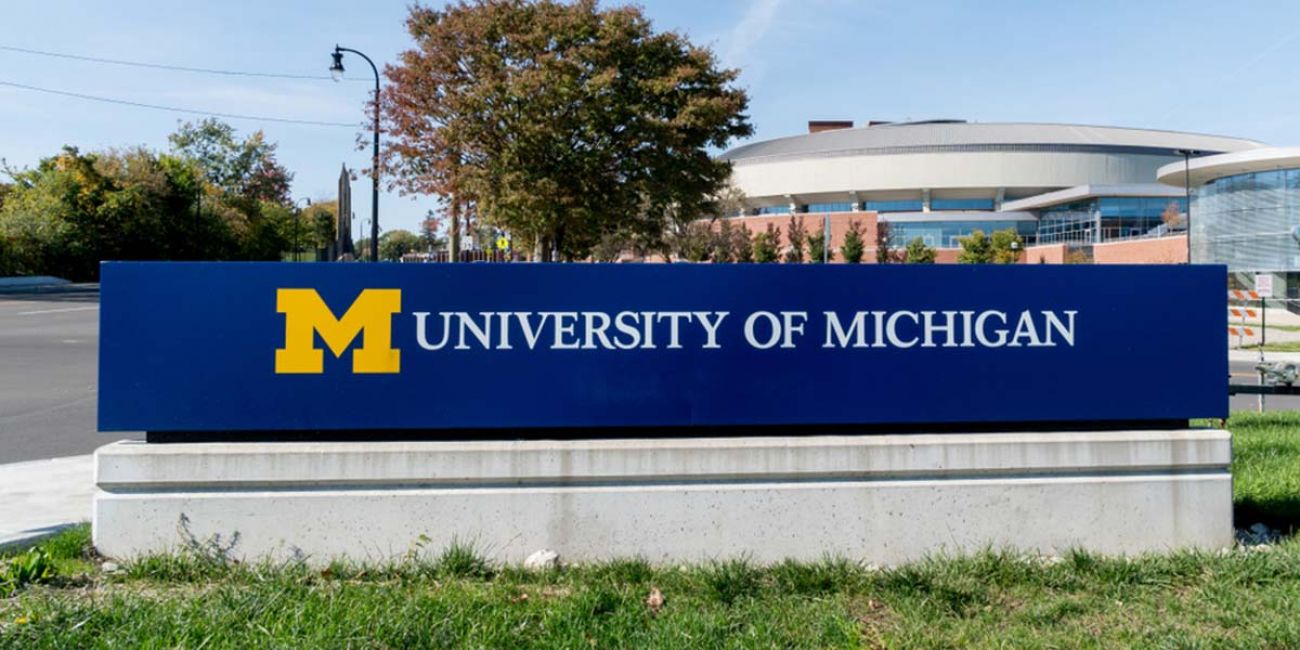Free tuition brings more low-income students to the University of Michigan

The University of Michigan, which has struggled for years to attract low-income students to its prestigious Ann Arbor campus, may have finally found the secret:
Free tuition.
The portion of U-M’s freshmen class that qualify for federal Pell Grants, given to students from low-income families, inched upward this year, to 17.9 percent, according to enrollment data released by the university Tuesday. That’s just a slight improvement over recent years, when the share of low-income students in incoming classes hovered between 15 percent and 17 percent, but the university sees it as a good first step.
In the summer of 2017, U-M announced the Go Blue Guarantee, a commitment to offer free tuition to Michigan students from families earning $65,000 or less. That’s slightly above the median household income in the state, so about half of Michigan households would qualify for the aid.
October 2019: Wayne State bets the word 'free' will lure students like it has at U-M
August 2019: Being poor on rich U-M campus still a struggle as school broadens reach
The goal of the policy was to attract more applications from low-income students, who may have assumed U-M was either too costly or not for students from rural or more modest backgrounds when in reality, it is the cheapest public university in the state for poor students.
"Through the Go Blue Guarantee and commitment to financial aid, we are sending a message to the people of our state and beyond that we seek to welcome students from all communities and backgrounds who have the talent and desire to be Michigan Wolverines," President Mark Schlissel said in a news release Tuesday.
U-M has the smallest proportion of low-income students among the state’s 15 public universities, and a lower rate than some other elite public universities, such as the University of California-Berkeley, where 31 percent of students are Pell-eligible. Indeed, one study last year reported that the median family income of a U-M student was $154,000.
But in the first year since implementing the guarantee, U-M saw a 24-percent increase in admissions applications from some of the state's lowest-income students, and a 6-percent increase in freshman enrollment from those with family incomes of $65,000 or less.
“The long-range goal is to motivate and challenge students, especially those who see their family income as a barrier to higher education because they now know that a University of Michigan education is within their reach," said Kedra Ishop, U-M vice provost for enrollment management.
Other data from U-M’s 2018 freshman enrollment report:
- The overall acceptance rate was 22 percent for the incoming class – 40 percent for in-state students and 19 percent for out-of-state and international students.
- 1-in-4 Michigan undergrad students from within the state paid no tuition this fall because of university financial aid, including the Go Blue Guarantee. That doesn’t mean all those students attend for free – tuition is only part of the total cost of college, which also includes room and board, books and fees.
- Students who are the first in their families to attend college make up 14 percent of the incoming freshmen class, up from 11 percent in 2014.
Related Michigan college affordability stories:
- Ignore the sticker price at Michigan universities. Here’s the real cost.
- The true cost of an education at Michigan public universities
- College funding cuts in Michigan have led to fewer students, greater debt
- Michigan business climate improves, but educated workforce is shrinking
- Michigan income growth hindered by lack of college graduates
- Why rural Michigan teens are skipping out on college. It's not grades
- The University of Michigan asks, ‘Where are the poor kids?’
Michigan Education Watch
Michigan Education Watch is made possible by generous financial support from:
Subscribe to Michigan Education Watch
See what new members are saying about why they donated to Bridge Michigan:
- “In order for this information to be accurate and unbiased it must be underwritten by its readers, not by special interests.” - Larry S.
- “Not many other media sources report on the topics Bridge does.” - Susan B.
- “Your journalism is outstanding and rare these days.” - Mark S.
If you want to ensure the future of nonpartisan, nonprofit Michigan journalism, please become a member today. You, too, will be asked why you donated and maybe we'll feature your quote next time!



